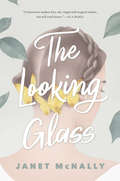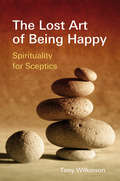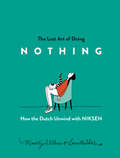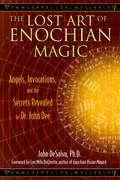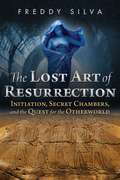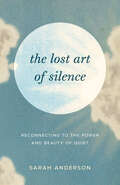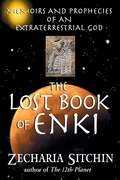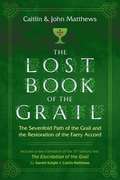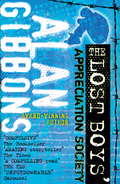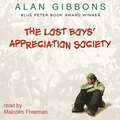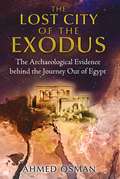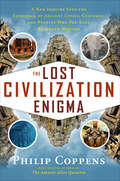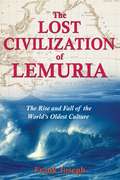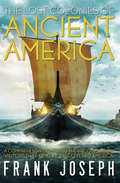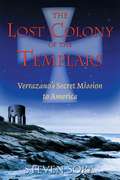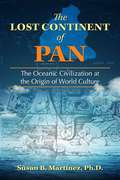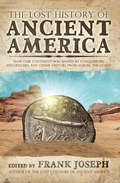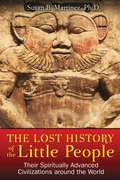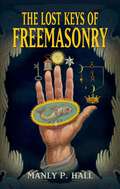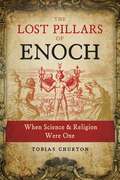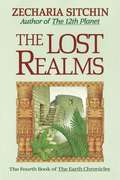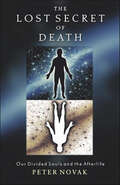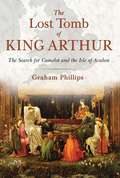- Table View
- List View
The Looking Glass
by Janet McNallyPerfect for fans of Emily Henry and Sarah Dessen, Janet McNally’s imaginative story of sisterhood shows that the fiercest of loves are often the ones that exist outside of happily-ever-afters.GIRLS IN TROUBLE. That’s what Sylvie Blake’s older sister Julia renamed their favorite fairy tale book, way back when they were just girls themselves. Now Julia has disappeared—and no one knows for sure if she wants to be away, or if she’s the one in trouble.Then a copy of their old storybook arrives with a mysterious list inside, and Sylvie begins to see signs of her sister, and their favorite fairy tales, everywhere she goes. With the help of her best friend’s enigmatic brother and his beat-up car, Sylvie sets out to follow the strange signs right to Julia and return to New York with her in tow. But trouble comes in lots of forms—and Sylvie soon learns that the damsel in distress is often the only one who can save herself.
The Lose Weight Naturally Cookbook
by Sharon S. Claessens Debra TkacHere are 450 nutritious, kitchen-tested recipes for weight loss, maintenance, & special treat times, in addition to a complete chart of calories, fat content, & nutritional values for over 700 foods.
The Lose Your Belly Diet: Change Your Gut, Change Your Life
by Travis Stork<P>.We want to be healthy. We want to be lean. And we want to lose that annoying fat around our bellies! <P>We can achieve ALL of these goals with The Lose Your Belly Diet. Based on exciting new research about the dramatic benefits of vibrant gut health and a diverse gut microbiome, this plan nurtures your gut while helping you burn off excess weight and harmful belly fat. <P>This plan is built around a very clear, research-based concept: Eating food that nourishes and protects the microbes in your gut paves the way for weight loss, a slimmer middle, and better overall health. <P>It’s not just about weight loss. Having great gut health is linked to good health throughout your body. Scientists in this rapidly growing field are finding connections between gut microbes and the immune system, weight loss, gastrointestinal health, , allergies, asthma, and even cancer. With every study that’s published, scientists become more convinced that having a healthy gut leads to having a healthy body. <P>We’re accustomed to thinking of bacteria as bad—and some are—but most of the bacteria and microbes in our guts do amazing things, like working with our immune system to fight disease and helping our bodies digest food. Not only can’t we live without them, but as their numbers and diversity increase, so too does our health. <P>In this book, we look at all of the ways you can improve your own gut health, starting with the food you eat. My diet recommendations, meal plans, and recipes will help feed and protect your gut microbes. And we look at the many other steps you can take to support your beneficial bacteria, from avoiding unnecessary antibiotics to changing the way you think about dirt and germs. Even the choices you make about how you bring your children into the world can have an impact on your family’s microbiomes. <P>In The Lose Your Belly Diet, we’ll cover all the bases, giving you everything you need to know to make dramatic changes in your GI health, your weight, your belly fat, and your overall health.
The Lost Art of Being Happy
by Tony WilkinsonArguing that spirituality is not about religion but about living happily, this guidebook offers advice on the skills of the inner life-the mind and emotions-that are needed for a life of gladness. This examination discusses the requirements for happiness, explores their nature, and shows that mastering a set of five of them leads to bliss. The exercises in this resource are offered to spiritual seekers as a path towards happiness and emphasize that personal elation is not caused by external events, but by mastering the skills of the inner life.
The Lost Art of Doing Nothing: How The Dutch Unwind With Niksen
by Maartje Willems“The best thing about niksen is the absence of a goal. It doesn’t serve a purpose, but it’s wonderful.” Don’t you think it’s time for a break? Plagued—as we are!—by nonstop pings and notifications, we have lost the knack of zoning out. Kicking back. Slacking off. Even when pandemic-induced lockdowns forcibly cleared our calendars, many who thought I’m free! filled their days with Netflix and doomscrolling. How can we reclaim our free time (planned or not) to truly rest and reset? The Dutch have it figured out: with niksen. Perhaps their best-kept lifestyle secret, niksen is the art of doing, well, nothing. It’s the opposite of productivity, and it’s incredibly good for your . . . MIND—it makes you calmer. BODY—it offers rest on hectic days. CREATIVITY—it clears a space for brilliant ideas. WALLET—it’s free! If you’re waiting for an invitation to go lie down in the sunshine, this book is it.
The Lost Art of Enochian Magic: Angels, Invocations, and the Secrets Revealed to Dr. John Dee
by Lon Milo Duquette John DesalvoA practical guide to Dr. John Dee’s angelic magic • Contains instructions for performing Enochian magic meditations • Examines John Dee’s original diaries from the British Library Enochian magic is a powerful, ancient system for opening portals to heavenly realms and enabling the ascent to God. The basis for many of the modern systems of magic, including the Golden Dawn, Enochian magic is named after the biblical prophet Enoch, who received the same knowledge and wisdom that was later conveyed to the astrologer to the court of Queen Elizabeth I, Dr. John Dee, by angels in the 16th century. In The Lost Art of Enochian Magic John DeSalvo traces the history of magic--from the earliest civilizations of the Akadians and Egyptians through the Greco-Roman period and up to the present time--to reveal how magic has penetrated and influenced our religious beliefs and practices today. Through his unprecedented investigation into the angelic magic of Dr. John Dee, during which time he deciphered Dee’s original phonetic notations in the margins of Dee’s 16th-century diaries, DeSalvo learned to properly reproduce the “Enochian calls,” which act like mantras in opening higher realms and invoking angels, key to this type of magical practice. DeSalvo shows how to use Enochian magic for personal spiritual development and also as protection from negative energies.
The Lost Art of Resurrection: Initiation, Secret Chambers, and the Quest for the Otherworld
by Freddy SilvaReveals the radical ancient practice of living resurrection, in which initiates ritually died and were reborn into a state of higher consciousness • Explores living resurrection initiation practices from world cultures, including Egyptian, Greek, Gnostic, Chinese, Celtic, and Native American traditions • Describes the secret chambers and temples where Mystery Schools practiced “raising the dead” • Shows why this practice was branded a heresy and suppressed by the Church More than two thousand years before the resurrection of Jesus, initiates from spiritual traditions around the world were already practicing a secret mystical ritual in which they metaphorically died and were reborn into a higher spiritual state. During this living resurrection, they experienced a transformative spiritual awakening that revealed the nature of reality and the purpose of the soul, described as “rising from the dead.” Exploring the practice of living resurrection in ancient Egyptian, Phoenician, Greek, Persian, Indian, Japanese, Chinese, Celtic, and Native American traditions, Freddy Silva explains how resurrection was never meant for the dead, but for the living--a fact supported by the suppressed Gnostic Gospel of Philip: “Those who say they will die first and then rise are in error. If they do not first receive the resurrection while they live, when they die they will receive nothing.” He reveals how these practices were not only common in the ancient world but also shared similar facets in each tradition: initiates were led through a series of challenging ordeals, retreated for a three-day period into a cave or restricted room, often called a “bridal chamber,” and while out-of-body, became fully conscious of travels in the Otherworld. Upon returning to the body, they were led by priests or priestesses to witness the rising of Sirius or the Equinox sunrise. Silva describes some of the secret chambers around the world where the ritual was performed, including the so-called tomb of Thutmosis III in Egypt, which featured an empty sarcophagus and detailed instructions for the living on how to enter the Otherworld and return alive. He reveals why esoteric and Gnostic sects claimed that the literal resurrection of Jesus promoted by the Church was a fraud and how the Church branded all living resurrection practices as a heresy, relentlessly persecuting the Gnostics to suppress knowledge of this self-empowering experience. He shows how the Knights Templar revived these concepts and how they survive to this day within Freemasonry. Exploring the hidden art of living resurrection, Silva shows how this personal experience of the Divine opened the path to self-empowerment and higher consciousness, leading initiates such as Plato to describe it as the pinnacle of spiritual development.
The Lost Art of Silence: Reconnecting to the Power and Beauty of Quiet
by Sarah AndersonA unique celebration of silence—in art, literature, nature, and spirituality—and an exploration of its ability to bring inner peace, widen our perspectives, and inspire the human spirit in spite of the noise of contemporary life.Silence is habitually overlooked—after all, throughout our lives, it has to compete with the cacophony of the outside world and our near-constant interior dialogue that judges, analyzes, compares, and questions. But, if we can get past this barrage, there lies a quiet place that&’s well worth discovering.The Lost Art of Silence encourages us to embrace this pursuit and allow the warm light of silence to glow. Invoking the wisdom of many of the greatest writers, thinkers, contemplatives, historians, musicians, and artists, Sarah Anderson reveals the sublime nature of quiet that&’s all too often undervalued. Throughout, she shares her own penetrating insights into the potential for silence to transform us. This celebration of silence invites us to widen our perspective and shows its power to inspire the human spirit in spite of the distracting noise of contemporary life.
The Lost Book of Enki: Memoirs and Prophecies of an Extraterrestrial god
by Zecharia SitchinThe companion volume to The Earth Chronicles series that reveals the identity of mankind’s ancient gods• Explains why these “gods” from Nibiru, the Anunnaki, genetically engineered Homo sapiens, gave Earthlings civilization, and promised to return• 30,000 sold in hardcoverZecharia Sitchin’s bestselling series The Earth Chronicles provided humanity’s side of the story concerning our origins at the hands of the Anunnaki, “those who from heaven to earth came.” In The Lost Book of Enki we now view this saga from the perspective of Lord Enki, an Anunnaki leader revered in antiquity as a god, who tells the story of these extraterrestrials’ arrival on Earth from the planet Nibiru.In his previous works Sitchin compiled the complete story of the Anunnaki’s impact on human civilization from fragments scattered throughout Sumerian, Akkadian, Babylonian, Assyrian, Hittite, Egyptian, Canaanite, and Hebrew sources. Missing from these accounts, however, was the perspective of the Anunnaki themselves. What was life like on their own planet? What motives propelled them to settle on Earth--and what drove them from their new home? Convinced of the existence of a lost book that held the answers to these questions, the author began his search for evidence. Through exhaustive research of primary sources, he has here re-created tales as the memoirs of Enki, the leader of these first “astronauts.” What takes shape is the story of a world of mounting tensions, deep rivalries, and sophisticated scientific knowledge that is only today being confirmed. An epic tale of gods and men unfolds, challenging every assumption we hold about our past and our future.
The Lost Book of the Grail: The Sevenfold Path of the Grail and the Restoration of the Faery Accord
by John Matthews Caitlín MatthewsReveals the long-forgotten prequel to the Grail mythos and how it has profound resonance with modern times • Includes the complete text of the Grail prequel, The Elucidation of the Grail, a 13th-century poem newly translated by Gareth Knight and Caitlín Matthews • Examines the forgotten story of the Faery Wars and the role of Well Maidens in the Grail story • Discusses the Seven Guardians of the Stories, the Grail Kings and Anti-Grail Kings, the Rich Company, the Courts of Joy, and the otherworldly Land of Women Unveiling the long-forgotten prequel to the Grail quest stories, Caitlín and John Matthews examine The Elucidation of the Grail, a forgotten 13th-century French text, and show how it offers the key to understanding the sevenfold path of the Grail and the deeper stories beneath the Christian Grail narrative. Beginning with a new translation of The Elucidation by foremost esotericist Gareth Knight and Caitlín Matthews, the authors provide a complete commentary on the poem, revealing a startling alternative cause of the Wasteland and the Grail quest, one which has a profound resonance with our own times. They examine the forgotten story of the Faery Wars and explain the Faery Accord, an agreement that once existed between humans and the Faery and upon which the spiritual and physical health of the land depends. The offering of the Grail and its regenerative powers by the Maidens of the Wells--Faery women--was part of this Accord. King Amangons and his men violated the Accord, through their abuse of the Well Maidens and other evil actions, causing the wasting of the land. The Knights of King Arthur seek to avenge the Well Maidens and rebirth the Grail to restore access to the lost paradisiacal “Courts of Joy” held in ancestral memory. On their quest, they encounter the Rich Company whose greed keeps the Knights occupied in long wars of attrition, yet their quest to restore the generous hospitality of the Wells--the true Grail, the Faery Grail--continues. In addition to the Faery Accord and Knights’ quest, the authors examine the Seven Guardians of the Stories, the Rich Fisher, the Courts of Joy and paradise lost, and the otherworldly Land of Women. They show how this lost book of the Grail reveals themes familiar to the modern world and offers hope of healing the rift between the worlds of Faery and human as well as restoration of our natural belonging to the land.
The Lost Boys' Appreciation Society
by Alan GibbonsGary was flicking beany gunge on my flawless new Ellesse top - I was yelling at him. What a pillock! Mum was dead, well - fatally injured - she died later in hospital. We just didn't know it at the time.Gary, John and Dad, too, are lost without Mum. Gary is only 14 and goes seriously off the rails, getting involved with local thugs and teetering on the brink of being on the wrong side of the law. John is wrestling with the GCSEs and his first romance - the gorgeous Olivia Bellman. But he's carrying the burden of trying to cope with Gary and Dad at the same time. And they're all living with the memories of someone they can never replace. Alan Gibbons has an extraordinary knack of knowing just what it's like to be a teenager. He writes here with compassion - and flashes of humour - about surviving against all the odds.
The Lost Boys' Appreciation Society
by Alan GibbonsGary was flicking beany gunge on my flawless new Ellesse top - I was yelling at him. What a pillock! Mum was dead, well - fatally injured - she died later in hospital. We just didn't know it at the time.Gary, John and Dad, too, are lost without Mum. Gary is only 14 and goes seriously off the rails, getting involved with local thugs and teetering on the brink of being on the wrong side of the law. John is wrestling with the GCSEs and his first romance - the gorgeous Olivia Bellman. But he's carrying the burden of trying to cope with Gary and Dad at the same time. And they're all living with the memories of someone they can never replace. Alan Gibbons has an extraordinary knack of knowing just what it's like to be a teenager. He writes here with compassion - and flashes of humour - about surviving against all the odds.Read by Malcolm Freeman(P)2004 Orion Publishing Group.Ltd
The Lost City of the Exodus: The Archaeological Evidence behind the Journey Out of Egypt
by Ahmed OsmanRecent archaeological findings confirm Osman’s 25-year-old discovery of the location of the city of the Exodus • Explains why modern scholars have been unable to find the city of the Exodus: they are looking in the wrong historical period and thus the wrong region of Egypt • Details the author’s extensive research on Hebrew scriptures and ancient Egyptian texts and records, which allowed him to pinpoint the Exodus site • Reveals his effort to have his finding confirmed by the Egyptian government, including his debates with Zahi Hawass, Egyptian Minister for Antiquities Affairs When the first archaeologists visited Egypt in the late 1800s, they arrived in the eastern Nile Delta to verify the events described in the biblical Book of Exodus. Several locations believed to be the city of the Exodus were found but all were later rejected for lack of evidence. This led many scholars to dismiss the Exodus narrative merely as a myth that borrowed from accounts of the Hyksos expulsion from Egypt. But as Ahmed Osman shows, the events of Exodus have a historical basis and the ruins of the ancient city of Zarw, where the Road to Canaan began, have been found. Drawing on decades of research as well as recent archaeological findings in Egypt, Ahmed Osman reveals the exact location of the lost city of the Exodus as well as his 25-year effort to have this finding confirmed by the Egyptian government, including his heated debates with Zahi Hawass, former Egyptian Minister for Antiquities Affairs. He explains why modern scholars have been unable to find the city of the Exodus: they are looking in the wrong historical period and thus the wrong region of Egypt. He details his extensive research on the Pentateuch of the Hebrew scriptures, the historical scenes recorded in the great hall of Karnak, and other ancient source texts, which allowed him to pinpoint the Exodus site after he discovered that the Exodus happened not during the pharaonic reign of Ramses II but during that of his grandfather Ramses I. Osman concluded that the biblical city of the Exodus was to be found at Tell Heboua at the ruins of the fortified city of Zarw, the royal city of Ramses I--far from the Exodus locations theorized by previous archaeologists and scholars. In 2012, after 20 years of archaeological work, the location of Zarw was confirmed by Egyptian officials exactly where Osman said it would be 25 years ago. Thus, Osman shows that, time and again, if we take the creators of the source texts at their word, they will prove to be right.
The Lost Civilization Enigma: A New Inquiry Into the Existence of Ancient Cities, Cultures, and Peoples Who Pre-Date Recorded History
by Philip CoppensAn examination of archaeological controversies, with arguments showing evidence of prehistoric civilizations not recorded as part of human history.Are history books giving us the whole story? Or is civilization far more complex and older than we have been taught?Our school textbooks barely mention the 6,000-year-old Sumerian civilization, yet the latest archaeological findings at sites such as Jericho and, most recently, Gobekli Tepe in Turkey have been dated to 10,000 BC.Civilization goes back at least another 10,000 years, if we are willing to believe what our ancestors themselves claimed.The Lost Civilization Enigma reveals the truth about:Lost magnitudes to known cultures, such as the Bosnian Pyramids and the civilization of “Old Europe.”The fabled lost “golden” cities of South America and the Amazon, which are slowly being rediscovered.Fascinating examples of lost technology, such as the Antikythera Device.Atlantis and the fact that it was a real civilization.Analyzing the historical and archaeological record, best-selling author Philip Coppens demonstrates that there is substantial evidence that civilization is far older, far more advanced, and far more special than is currently accepted. Clearly, our history books have left out a great deal!
The Lost Civilization of Lemuria: The Rise and Fall of the World’s Oldest Culture
by Frank JosephA compelling new portrait of the lost realm of Lemuria, the original motherland of humanity• Contains the most extensive and up-to-date archaeological research on Lemuria• Reveals a lost, ancient technology in some respects more advanced than modern science• Provides evidence that the perennial philosophies have their origin in Lemurian cultureBefore the Indonesian tsunami or Hurricane Katrina’s destruction of New Orleans, there was the destruction of Lemuria. Oral tradition in Polynesia recounts the story of a splendid kingdom that was carried to the bottom of the sea by a mighty “warrior wave”--a tsunami. This lost realm has been cited in numerous other indigenous traditions, spanning the globe from Australia to Asia to the coasts of both South and North America. It was known as Lemuria or Mu, a vast realm of islands and archipelagoes that once sprawled across the Pacific Ocean. Relying on 10 years of research and extensive travel, Frank Joseph offers a compelling picture of this motherland of humanity, which he suggests was the original Garden of Eden.Using recent deep-sea archaeological finds, enigmatic glyphs and symbols, and ancient records shared by cultures divided by great distances that document the story of this sunken world, Joseph painstakingly re-creates a picture of this civilization in which people lived in rare harmony and possessed a sophisticated technology that allowed them to harness the weather, defy gravity, and conduct genetic investigations far beyond what is possible today. When disaster struck Lemuria, the survivors made their way to other parts of the world, incorporating their scientific and mystical skills into the existing cultures of Asia, Polynesia, and the Americas. Totem poles of the Pacific Northwest, architecture in China, the colossal stone statues on Easter Island, and even the perennial philosophies all reveal their kinship to this now-vanished civilization.
The Lost Colonies of Ancient America: A Comprehensive Guide to the Pre-Columbian Visitors Who Really Discovered America
by Frank JosephWas America truly unknown to the outside world until Christopher Columbus "discovered" it in 1492? Could a people gifted enough to raise the Great Pyramid more than 4,000 years ago have lacked the skills necessary to build a ship capable of crossing the Atlantic? Did the Phoenicians, who circumnavigated the African continent in 600 bc, never consider sailing farther? Were the Vikings, the most fearless warriors and seafarers of all time, terrified at the prospect of a transoceanic voyage?If so, how are we to account for an Egyptian temple accidentally unearthed by Tennessee Valley Authority workers in 1935? What is a beautifully crafted metal plate with the image of a Phoenician woman doing in the Utah desert? And who can explain the discovery of Viking houses and wharves excavated outside of Boston?These enigmas are but a tiny fraction of the abundant physical proof for Old World visitors to our continent hundreds and thousands of years ago. In addition, Sumerians, Minoans, Romans, Celts, ancient Hebrews, Indonesians, Africans, Chinese, Japanese, Welsh, Irish, and the Knights Templar all made their indelible, if neglected, mark on our land.
The Lost Colony of the Templars: Verrazano's Secret Mission to America
by Steven SoraReveals the existence of a Templar colony in the New World and how the explorer Verrazano, also a member of a secret society, attempted to reestablish contact with it • Explores Columbus’s connection to Henry Sinclair’s maps of the New World • Examines the secret alliance of Catholic Sulpicians and French Huguenots to preserve the Templar legacy • Reveals the hidden knowledge preserved in the Templar baptisteries found throughout Europe and in Newport, Rhode Island In 1524 the Italian explorer Giovanni da Verrazano was sent by the French king Francis I on an expedition ostensibly to find a shorter route to China. However, his true mission, Steven Sora suggests, was to contact a Templar colony that might have been established in Newport, Rhode Island, by Henry Sinclair at the end of the 14th century. In his expedition log Verrazano recorded that his only stay on this journey was at Newport Harbor, the site of a tower built to the exact measurements of a Templar baptistery, a sacred sanctuary representing baptism and eternal life. This tower is a remnant of Sinclair’s voyage to America nearly a century before that of Columbus (who had access to Sinclair’s maps thanks to his wife, who was Sinclair’s great-granddaughter). While Verrazano’s mission succeeded in finding the tower, the colony itself eluded him. His backers then decided to resurrect the dream of Acadia--a place where they could aspire to higher knowledge without fear of Church or state--by creating a new Secret Society that included Huguenots and Catholic Sulpicians. This Company of the Holy Sacrament would lay the foundations for Montreal in an attempt to realize the ambitions of Sinclair and his Templar companions, as well as to stave off efforts by the Jesuits to transform Quebec into a fiefdom of the orthodox Church. Quebec’s motto, “Je me souviens” (I remember), is a reference to this secret history.
The Lost Continent of Pan: The Oceanic Civilization at the Origin of World Culture
by Susan B. MartinezReveals the Pacific Ur-culture that seeded the ancient civilizations of China, Egypt, India, Mexico, and Peru• Shows how the Pan diaspora explains the similarities between Gobekli Tepe and Toltec carvings and stone towers in Japan and on Easter Island• Reveals the mother tongue of Pan hidden in shared word roots in vastly different languages, including Quechua, Sanskrit, Japanese, Greek, and Sumerian• Explains the red-haired Caucasian mummies of China, the Ainu of Japan, the presence of “white” humans in early Native American legend, and other light-skinned peoples found in Southeast Asia and the Middle EastThe destruction of the vast continent of Pan--also known as Lemuria or Mu--in the Pacific Ocean 24,000 years ago was the greatest catastrophe that ever befell humanity. Yet it resulted in a prehistoric Golden Age of arts and technology thanks to the Sons of Noah, who, forewarned and prepared for the disaster, escaped in 5 organized fleets. Theirs was the masterful Ur-culture that seeded China, Egypt, India, Mexico, and Peru, explaining the sudden injection of the same advanced knowledge and sophisticated arts into those widely separated lands. Examining the diaspora from the sunken continent of Pan, Susan B. Martinez finds traces of the oceanic Pan civilization in arts and technologies from canal-works, masonry, and agriculture to writing, weaving, and pottery, but most importantly in the art of navigation, the hallmark of the survivors of the catastrophe. Using archaeo-linguistic analysis, she reveals the mother tongue of Pan hidden in strikingly similar words for royalty, deities, and important places in vastly different languages, including Quechua, Maori, Sanskrit, Japanese, Chinese, Greek, and Sumerian, as well as English through the prefix “pan” which denotes “all-encompassing.” The author reveals how the Pan diaspora explains the mound builders on each continent, the presence of “white” humans in Native American legend, the red-haired mummies found in China, and the Ainu of Japan. She shares recent genetic studies that reveal Polynesian DNA in central Europeans, Mesopotamians, South Americans, and the 9000-year-old Kennewick man and shows how Pan provides the missing link. She reveals why carvings at Gobekli Tepe are similar to Toltec artistry, why stone towers in Japan and Easter Island are identical, and how the Pacific Ring of Fire was activated. Moving the Garden of Eden from the Fertile Crescent to the South Seas, Martinez strikes down the pervasive view of Atlantis as the source of ancient knowledge and exposes the original unity of mankind on the ancient Pacific continent of Pan.
The Lost History of Ancient America: How Our Continent was Shaped by Conquerors, Influencers, and Other Visitors from Across the Ocean
by Frank JosephThe Lost History of Ancient America presents new evidence of transoceanic visitors to America, hundreds, even thousands, of years before Christopher Columbus was born. Its 20 eminent contributors are experts in a variety of fields, from botany, biology, and prehistoric engineering to underwater archaeology, archaeo-astronomy, and Bronze Age warfare. In ancient times, the sea was not an impassable barrier separating our ancestors from the outside world, but a highway taking them to every corner of it. Never before and nowhere else has so much evidence proving the impact made on America by overseas visitors been assembled. You will learn about:A chain of stonewalls across southern Illinois that has stood for the last two millennia.A profusion of plants flourishing throughout the United States and Canada that originated more than 20 centuries ago.Underwater ruins recently found off the coast of Oregon.Bronze Age oil wells in Pennsylvania.And much, much more.The Lost History of Ancient America ends the debate between cultural diffusionists--who have always known that our ancient ancestors did not consider the sea an impassable barrier--and cultural isolationists, who have been equally certain that humans lacked the know-how and courage for global navigation until a little more than 500 years ago.
The Lost History of the Little People: Their Spiritually Advanced Civilizations around the World
by Susan B. MartinezReveals an ancient race of Little People, the catalyst for the emergence of the first known civilizations • Traces the common roots of key words and holy symbols, including the scarlet biretta of Catholic cardinals, back to the Little People • Explains how the mounds of North America and Ireland were not burial sites but the homes of the Little People • Includes the Tuatha De Danaan, the Hindu Sri Vede, the dwarf gods of Mexico and Peru, the Menehune of Hawaii, the Nunnehi of the Cherokee as well as African Pygmies and the Semang of Malaysia All cultures haves stories of the First People, the “Old Ones,” our prehistoric forebears who survived the Great Flood and initiated the first sacred traditions. From the squat “gods” of Mexico and Peru to the fairy kingdom of Europe to the blond pygmies of Madagascar, on every continent of the world they are remembered as masters of stone carving, agriculture, navigation, writing, and shamanic healing--and as a “hobbit” people, no taller than 31/2 feet in height yet perfectly proportioned. Linking the high civilizations of the Pleistocene to the Golden Age of the Great Little People, Susan Martinez reveals how this lost race was forced from their original home on the continent of Pan (known in myth as Mu or Lemuria) during the Great Flood of global legend. Following the mother language of Pan, Martinez uncovers the original unity of humankind in the common roots of key words and holy symbols, including the scarlet biretta of Catholic cardinals, and shows how the Small Sacred Workers influenced the primitive tribes that they encountered in the post-flood diaspora, leading to the rise of civilization. Examining the North American mound-culture sites, including the diminutive adult remains found there, she explains that these stately mounds were not burial sites but the sanctuaries and homes of the Little People. Drawing on the intriguing worldwide evidence of pygmy tunnels, dwarf villages, elf arrows, and tiny coffins, Martinez reveals the Little People as the real missing link of prehistory, later sanctified and remembered as gods rather than the mortals they were.
The Lost Keys of Freemasonry
by Manly P. HallA high-ranking Mason offers a fascinating glimpse into the Western world's most secretive society. Manly P. Hall, a scholar of occult and esoteric ideas, traces the path followed by initiates to the ancient craft. Hall also recounts the ethical training required of a Freemason, and he profiles the character traits a Mason must "build" within himself.More than a mere social organization a few centuries old, Freemasonry can be regarded as a perpetuation of the philosophical mysteries and initiations of the ancients. This book reveals the unique and distinctive elements that have inspired generations of Masons. Thoughtful members of the craft, as well as outsiders, will appreciate its exploration of Masonic idealism and the eternal quest, from humble candidate to entered apprentice and master Mason.
The Lost Pillars of Enoch: When Science and Religion Were One
by Tobias ChurtonExplores the unified science-religion of early humanity and the impact of Hermetic philosophy on religion and spirituality • Investigates the Jewish and Egyptian origins of Josephus&’s famous story that Seth&’s descendants inscribed knowledge on two pillars to save it from global catastrophe • Reveals how this original knowledge has influenced civilization through Hermetic, Gnostic, Kabbalistic, Masonic, Hindu, and Islamic mystical knowledge • Examines how &“Enoch&’s Pillars&” relate to the origins of Hermeticism, Freemasonry, Newtonian science, William Blake, and Theosophy Esoteric tradition has long maintained that at the dawn of human civilization there existed a unified science-religion, a spiritual grasp of the universe and our place in it. The biblical Enoch--also known as Hermes Trismegistus, Thoth, or Idris--was seen as the guardian of this sacred knowledge, which was inscribed on pillars known as Enoch&’s or Seth&’s pillars. Examining the idea of the lost pillars of pure knowledge, the sacred science behind Hermetic philosophy, Tobias Churton investigates the controversial Jewish and Egyptian origins of Josephus&’s famous story that Seth&’s descendants inscribed knowledge on two pillars to save it from global catastrophe. He traces the fragments of this sacred knowledge as it descended through the ages into initiated circles, influencing civilization through Hermetic, Gnostic, Kabbalistic, Masonic, Hindu, and Islamic mystical knowledge. He follows the path of the pillars&’ fragments through Egyptian alchemy and the Gnostic Sethites, the Kabbalah, and medieval mystic Ramon Llull. He explores the arrival of the Hermetic manuscripts in Renaissance Florence, the philosophy of Copernicus, Pico della Mirandola, Giordano Bruno, and the origins of Freemasonry, including the &“revival&” of Enoch in Masonry&’s Scottish Rite. He reveals the centrality of primal knowledge to Isaac Newton, William Stukeley, John Dee, and William Blake, resurfacing as the tradition of Martinism, Theosophy, and Thelema. Churton also unravels what Josephus meant when he asserted one Sethite pillar still stood in the &“Seiriadic&” land: land of Sirius worshippers. Showing how the lost pillars stand as a twenty-first century symbol for reattaining our heritage, Churton ultimately reveals how the esoteric strands of all religions unite in a gnosis that could offer a basis for reuniting religion and science.
The Lost Realms (The\earth Chronicles #Bk. 4)
by Zecharia SitchinThe Earth Chronicles series is based on the premise that mythology is not fanciful but the repository of ancient memories; that the Bible ought to be read literally as a historic/scientific document; and that ancient civilizations--older and greater than assumed--were the product of knowledge brought to Earth by the Anunnaki, "Those Who from Heaven to Earth Came." The 12th Planet, the first book of the series, presents ancient evidence for the existence of an additional planet in the Solar System: the home planet of the Anunnaki. In confirmation of this evidence, recent data from unmanned spacecraft has led astronomers to actively search for what is being called "Planet X." The subsequent volume, The Stairway to Heaven, traces man's unending search for immortality to a spaceport in the Sinai Peninsula and to the Giza pyramids, which had served as landing beacons for it--refuting the notion that these pyramids were built by human pharaohs. Recently, records by an eye witness to a forgery of an inscription by the pharaoh Khufu inside the Great Pyramid corroborated the book's conclusions. The Wars of Gods and Men, recounting events closer to our times, concludes that the Sinai spaceport was destroyed 4,000 years ago with nuclear weapons. Photographs of Earth from space clearly show evidence of such an explosion. Such gratifying corroboration of audacious conclusions has been even swifter for The Lost Realms. In the relatively short interval between the completion of the manuscript and its publication, archaeologists, linguists, and other scientists have offered a "coastal theory" in lieu of the "frozen trekking" one to account for man's arrival in the Americas--in ships, as this volume has concluded. These experts have "suddenly discovered 2,000 years of missing civilization" in the words of a Yale University scholar--confirming this book's conclusion--and are now linking the beginnings of such civilizations to those of the Old World, as Sumerian texts and biblical verses.For the first time, the entire Earth Chronicles series is now available in a hardcover collector's edition.
The Lost Secret of Death: Our Divided Souls and the Afterlife
by Peter NovakNovak investigates a belief called the Binary Soul Doctrine (BSD) which states simply that humans possess two souls which split at death, the conscious going on to reincarnate again and again, while the unconscious ends up in a type of limbo judging itself for all eternity.He goes on to explain that long ago the BSD was the primary belief of a single world religion, which since has been broken into more and more fragments. However, he claims that twentieth-century findings, including the work of Freud and Jung, as well as findings of modern neuroscience and Near-Death research, has marked a resurgence of belief in the veracity of the BSD.Novak argues--just as those long ago did--that it is essential for humans to integrate these two souls together before death to avoid the nightmare of being split in two at death. He even offers a few steps to help readers start the process of integration.
The Lost Tomb of King Arthur: The Search for Camelot and the Isle of Avalon
by Graham PhillipsOne man’s journey to uncover the final resting place of the historical King Arthur • Pinpoints the exact locations of Arthur’s tomb, the ruins of Camelot, and the sword Excalibur using literary research and the latest geophysics equipment • Examines previously unknown ancient manuscripts preserved in the vaults of the British Library--including one written within the living memory of Arthur’s time • Reveals the mythic king as the real-life leader Owain Ddantgwyn, who united the British to repel invasion from Germany around 500 AD One of the most enigmatic figures in world history, King Arthur has been the subject of many fantastical tales over the past 1500 years, leading many scholars to regard him and his fabled city of Camelot simply as myth. But, as Graham Phillips shows through a wealth of literary and scientific evidence, King Arthur was a real man, Camelot a real place, and the legendary Excalibur a real sword--and Phillips has located them all. Phillips examines the earliest stories of Arthur as well as previously unknown ancient manuscripts preserved in the vaults of the British Library in London, such as the work of the 9th-century monk Nennius, to pinpoint the exact locations of Arthur’s tomb, the ruins of Camelot, and the sword Excalibur. He reveals the mythic king as the real-life leader Owain Ddantgwyn, who united the British to repel invasion from Germany around 500 AD. Moving his quest from library vaults to the real sites of Arthur’s life, the author confirms his research through a Dark Age monument, hidden away in the mountains of western Britain, that bears an inscription about a powerful warlord who went by the battle title “Arthur.” He visits archaeological excavations at the ruins of Viroconium, near Wroxeter in Shropshire, clearly identifying the ancient city as Camelot, the fortified capital of Arthur’s Britain. Working with specialist divers and marine archaeologists, he surveys the depths of an ancient lake in the English countryside to reveal the resting place of Excalibur. Enlisting a team of scientists and sophisticated geophysics equipment, he uncovers the lost grave of the historical King Arthur, buried with his shield, just as told in legend. The culmination of 25 years of research, including new translations of primary source material, this book provides the necessary evidence to allow King Arthur to finally be accepted as the authentic British king he was.
